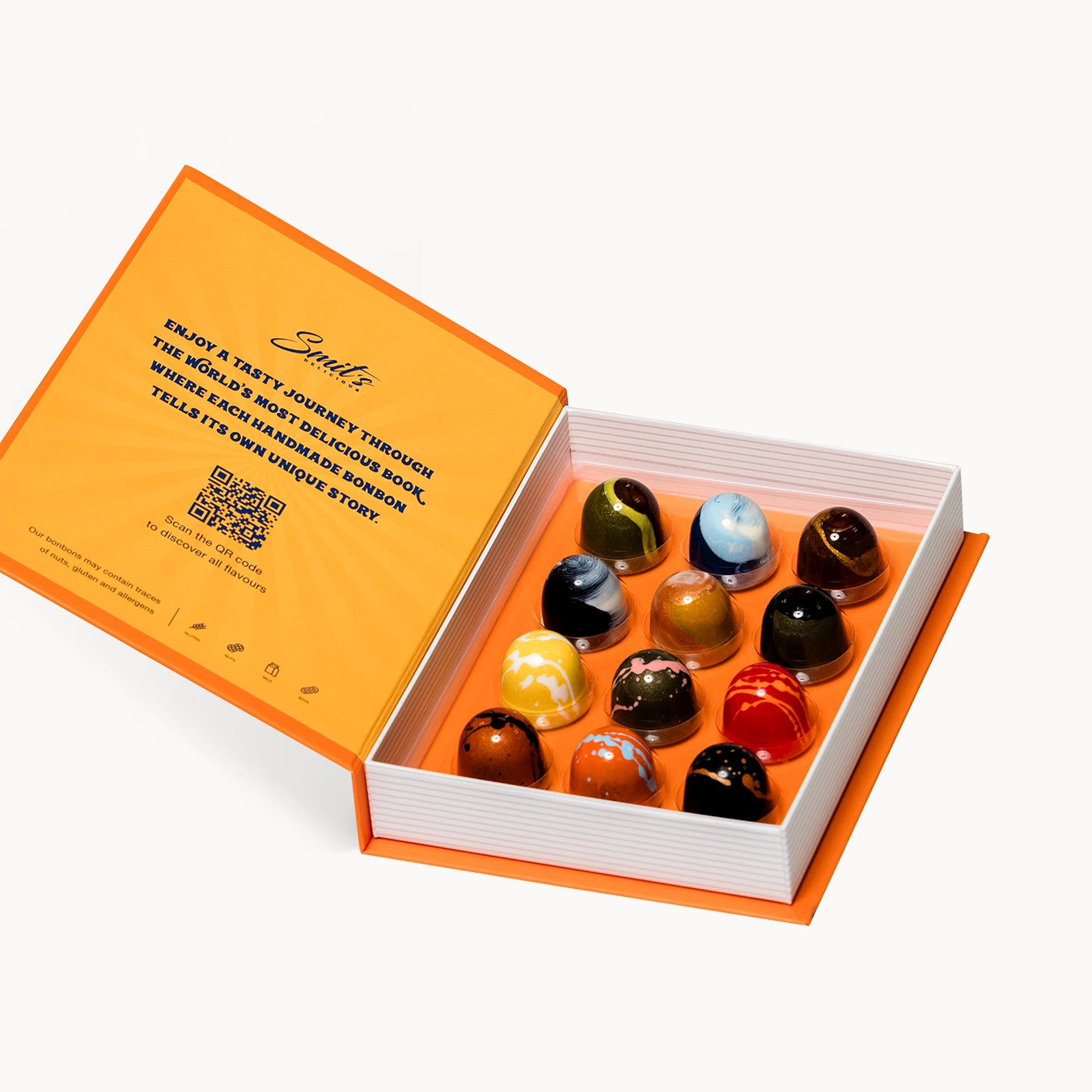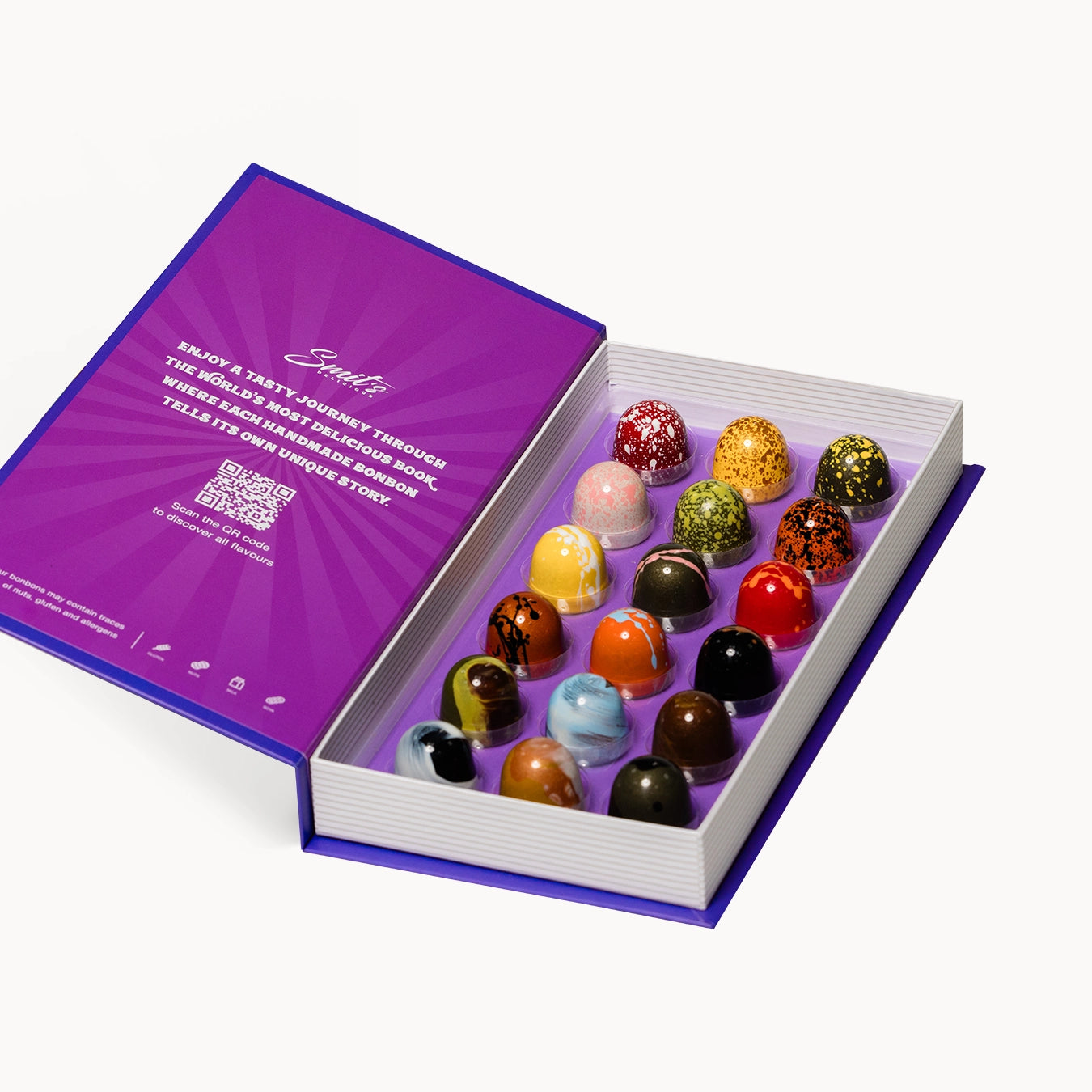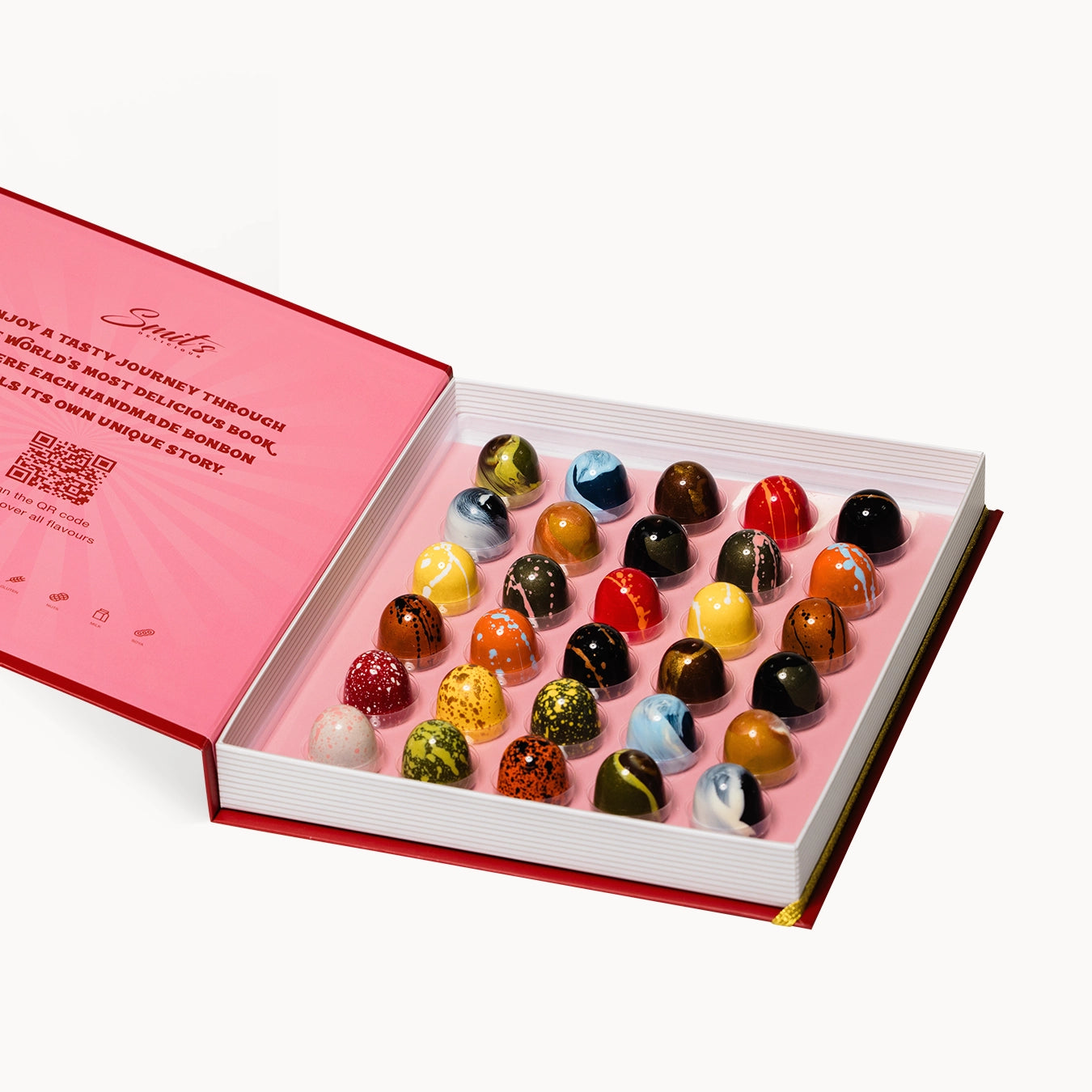Bonbons are a luxurious treat that makes many of us drool. But how are these little chocolate treasures actually made? The process behind bonbon making is a refined art that requires precision, patience, and craftsmanship. At Bonbonbook, we use only the finest, honest ingredients, such as premium Valrhona chocolate, to create our bonbons. We strive to create bonbons that not only taste delicious but are also a work of art to behold. In this blog post, you'll discover step-by-step how we make our bonbons at Bonbonbook, from the very first chocolate to the perfect finish.
Step 1: Choosing the right ingredients
The process of making bonbons begins with selecting the right ingredients. At Bonbonbook, we place great value on the quality of our raw materials. We use only premium Valrhona chocolate, known for its rich flavor and high quality. We also ensure we use ethically sourced ingredients for our fillings, from creamy ganache to crunchy praline or fruity fillings. Depending on the bonbon, nuts, liqueur, or other flavorings can also be added to the filling.
Step 2: Melting and tempering the chocolate
Melting the chocolate is a crucial part of the process. Chocolate must be melted and tempered at a specific temperature. Tempering gives the chocolate a glossy finish and a firm, crisp texture. This prevents the bonbon from becoming dull or from setting unevenly. The chocolate is heated slowly to a temperature of about 45°C (113°F), then cooled to around 27°C (80°F), and then reheated to 31-32°C (88-90°F) to complete the tempering process.
Step 3: Making the filling
The filling of a bonbon determines its flavor and varies greatly depending on the type. The classic filling is ganache, a blend of chocolate and cream, which offers a creamy, velvety texture. There are also praline bonbons, whose filling consists of a mixture of caramelized nuts such as hazelnuts or almonds, creating a nutty flavor and a crunchy texture. Fruity fillings, such as raspberry or passion fruit, are also popular and provide a refreshing contrast to the rich chocolate.
Besides ganache and praline, you can also find bonbons with fillings based on caramel, marzipan, or even liqueur, which provide a surprising explosion of flavors with every bite.
Step 4: Pouring or dipping the chocolates
There are two main methods for filling chocolates: pouring and dipping.
-
Molded bonbons: With this method, the tempered chocolate is poured into a mold. After the mold is coated with a thin layer of chocolate, the filling is added, and then the bonbon is sealed with another layer of chocolate. The mold is then cooled so that the chocolate sets quickly and the bonbons can be easily removed from the mold.
-
Hand-dipped bonbons: With this method, a square of filling, such as ganache or praline, is dipped into the melted chocolate. This process requires manual labor, as the chocolate is carefully coated around the filling. The bonbons are then finished by hand for the perfect look.
Step 5: Decorating the chocolates
One of the final steps in making bonbons is decorating. Chocolatiers often adorn the bonbons with edible decorations such as nuts, cocoa powder, edible gold leaf, or even delicate chocolate patterns. These decorations are not only visually appealing but can also enhance the flavor. For example, some bonbons are decorated with a thin layer of salt to accentuate the sweetness of the filling.
At Bonbonbook, we emphasize refinement and creativity in our decorations, so that each bonbon becomes a true work of art. We ensure that every bonbon is perfect, both in taste and appearance.
Step 6: Packaging and presenting
Once the chocolates have cooled and been decorated, they are carefully packaged in luxurious boxes or cases. The packaging is just as important as the contents, as chocolates are often given as gifts. At Bonbonbook, we pay close attention to the presentation of our chocolates. We use beautiful, luxurious packaging that enhances the chocolates' appearance. The chocolates are then ready to find their way to the happy recipient or to enjoy yourself.
The importance of craftsmanship in making chocolates
Making bonbons requires not only the right ingredients but also a great deal of experience and craftsmanship. Tempering the chocolate, balancing flavors, and creating the perfect filling are essential elements of the process. At Bonbonbook, we dedicate considerable time and care to every step of the production process, ensuring our bonbons are of the highest quality. Whether it's a traditional bonbon or an innovative flavor combination, every step plays a crucial role in the final result.
Why homemade chocolates are so special
Homemade chocolates stand out from mass-produced chocolates because of the care and passion they bring to the table. This craftsmanship is reflected not only in the taste but also in the texture and presentation. At Bonbonbook, we create chocolates that are not only delicious but also offer a unique experience. Homemade chocolates are often made with love, with attention to the smallest details, making them extra special.












